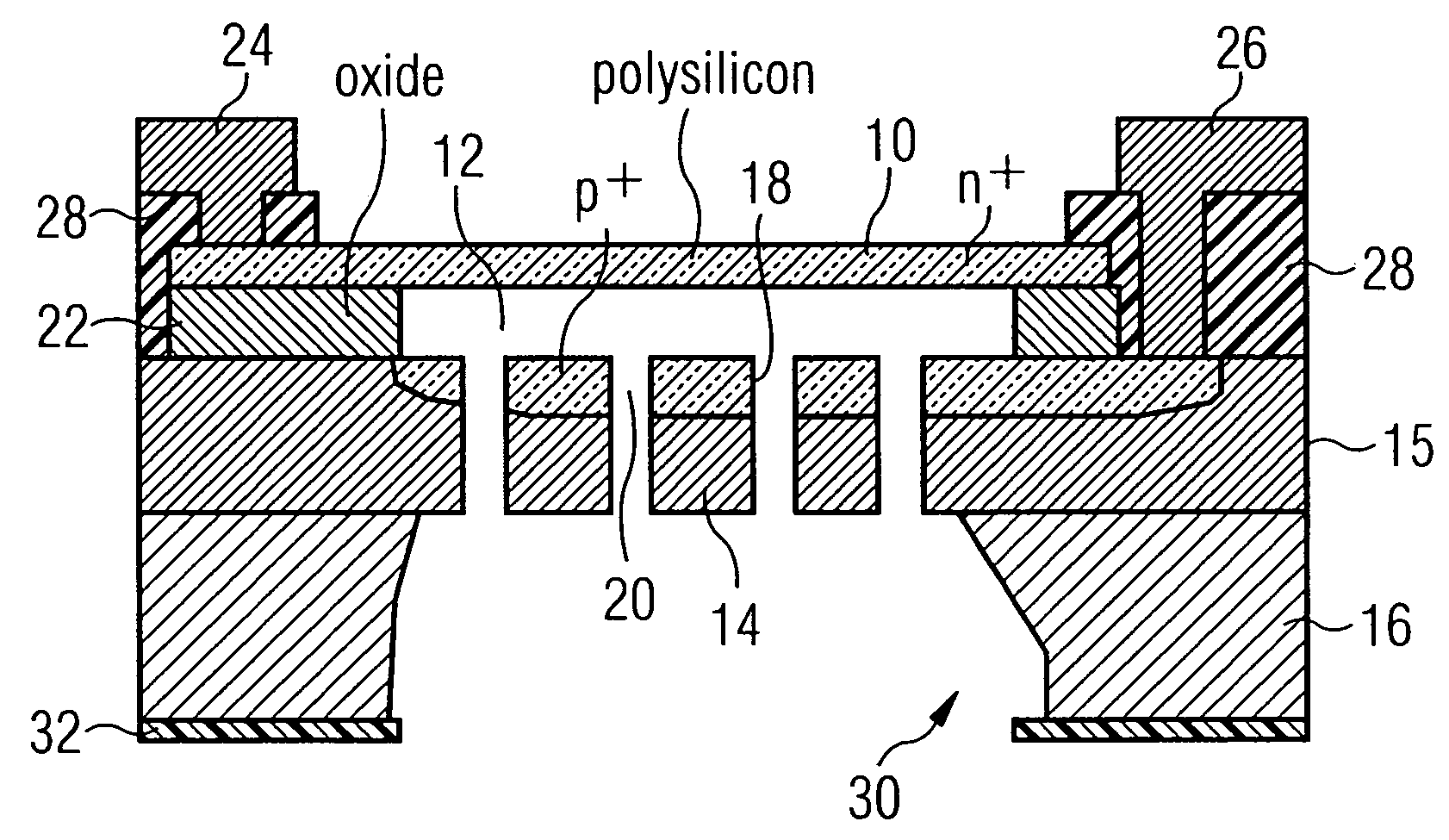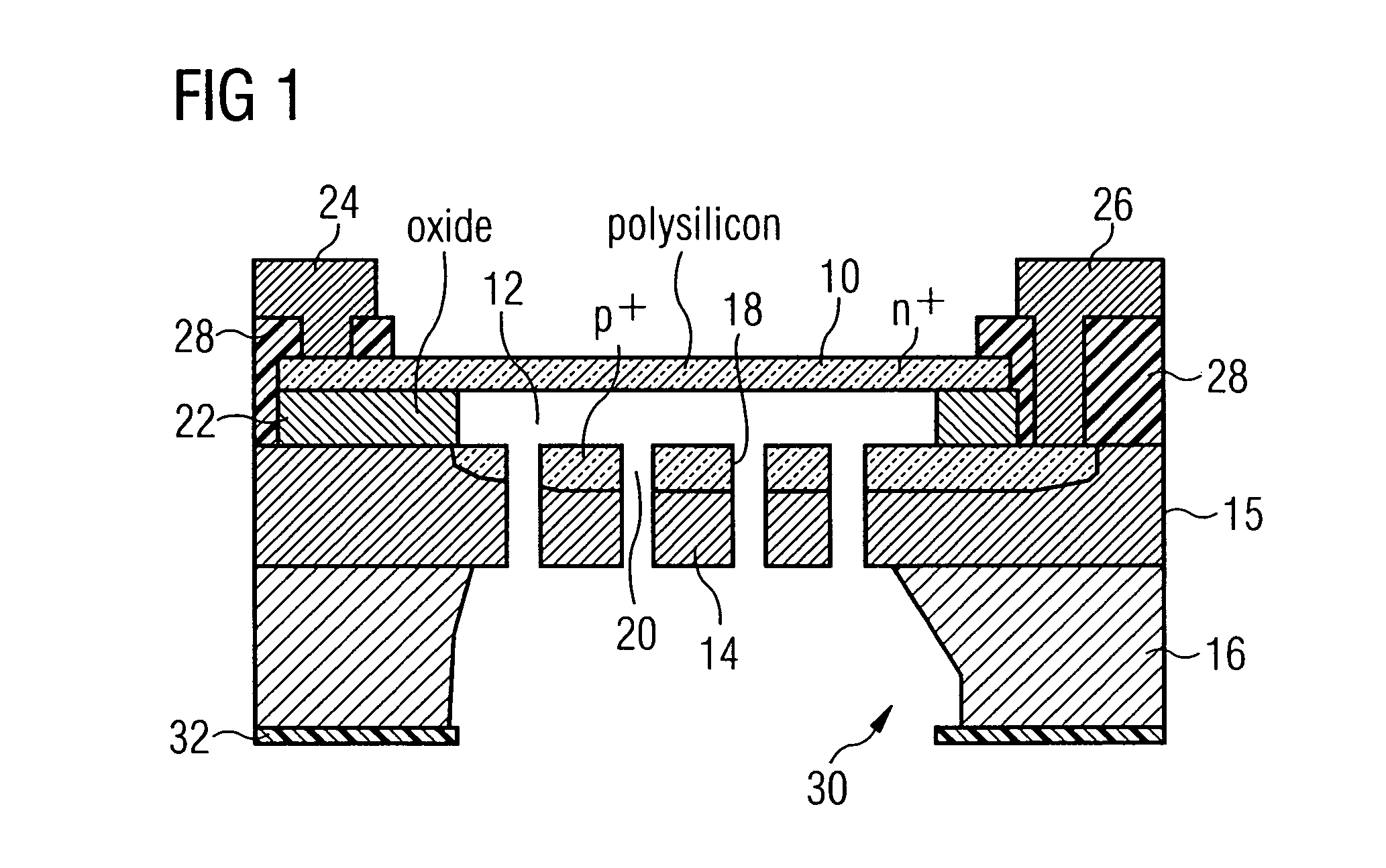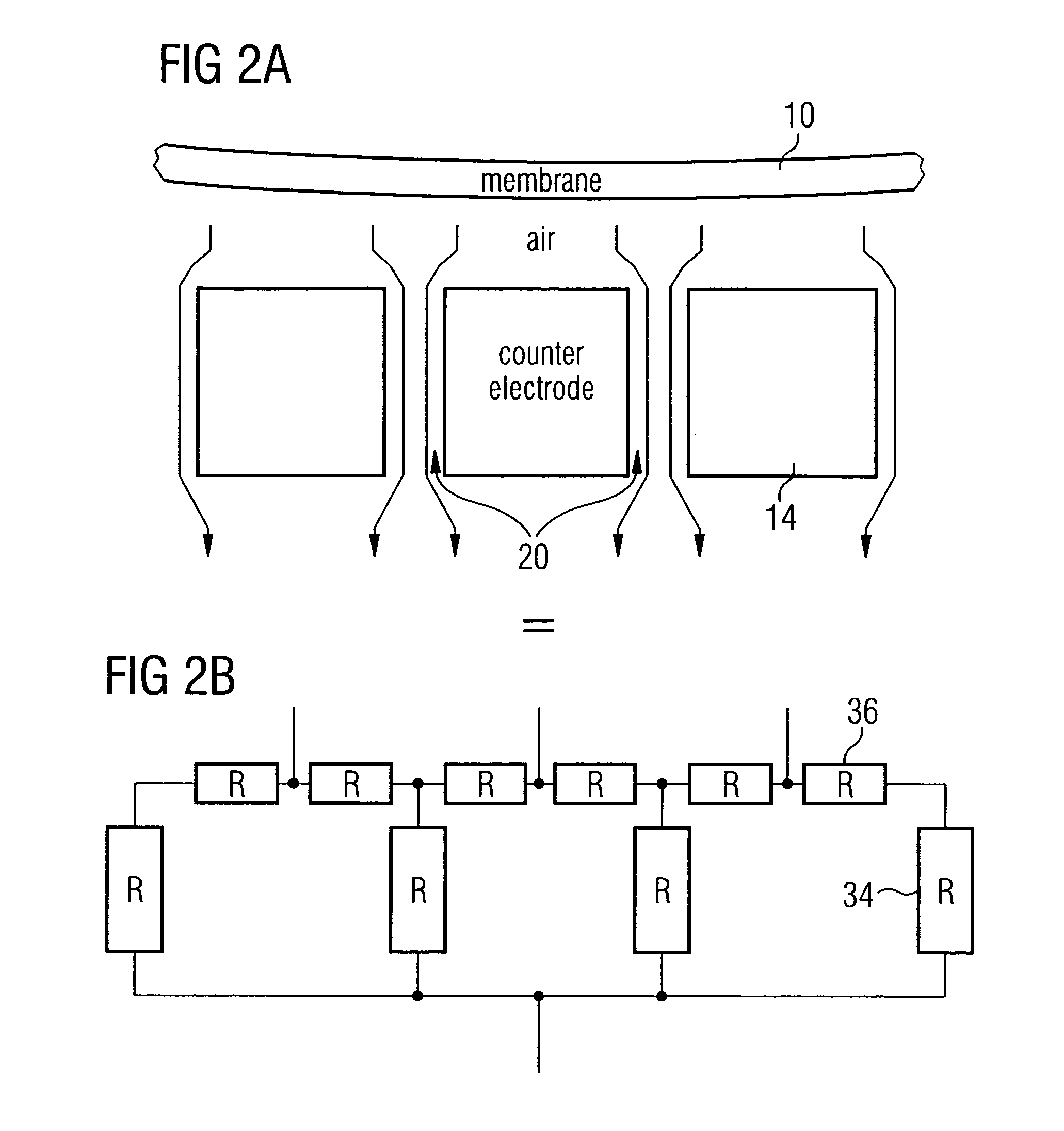Micromechanical sensors and methods of manufacturing same
a micromechanical sensor and manufacturing method technology, applied in the direction of fluid pressure measurement, semiconductor electrostatic transducers, instruments, etc., can solve the problems of low sensor sensitivity, inability to meet the needs of large-scale production of microphones, and complicated electroplating process, etc., to achieve sufficient stability of the counter element or the counter electrode, and the acoustic friction resistance of the slot-formed perforation is considerably smaller. , the effect of reducing the sensitivity
- Summary
- Abstract
- Description
- Claims
- Application Information
AI Technical Summary
Benefits of technology
Problems solved by technology
Method used
Image
Examples
Embodiment Construction
[0026]Referring to FIG. 1, the general setup of an inventive silicon microphone is to be described at first, wherein such a microphone can be manufactured with advantage using the method described in WO 00 / 09440.
[0027]As can be seen from the schematic cross-sectional view of FIG. 1, the one-chip silicon microphone comprises a movable membrane 10 made of an n+-doped polysilicon. The membrane 10, via a sensor cavity 12, is opposite to a counter electrode 14 formed by areas of an epitaxy layer 15 formed on a substrate 16. A p+-doping area 18 and perforation openings 20 are formed in the counter electrode 14.
[0028]The membrane 10 is attached to the counter electrode via a spacing layer 22 which in the embodiment shown consists of oxide. A first terminal electrode 24 is connected to the membrane 10 in an electrically conductive way, while a second terminal electrode 26 is connected to the doping area 18 of the counter electrode 14 in an electrically conductive way. For this purpose, an i...
PUM
 Login to View More
Login to View More Abstract
Description
Claims
Application Information
 Login to View More
Login to View More - R&D
- Intellectual Property
- Life Sciences
- Materials
- Tech Scout
- Unparalleled Data Quality
- Higher Quality Content
- 60% Fewer Hallucinations
Browse by: Latest US Patents, China's latest patents, Technical Efficacy Thesaurus, Application Domain, Technology Topic, Popular Technical Reports.
© 2025 PatSnap. All rights reserved.Legal|Privacy policy|Modern Slavery Act Transparency Statement|Sitemap|About US| Contact US: help@patsnap.com



